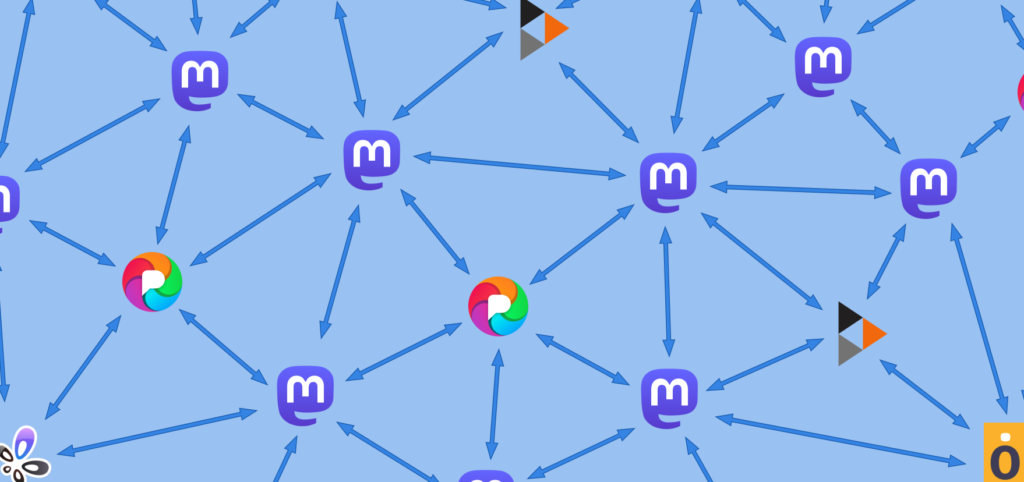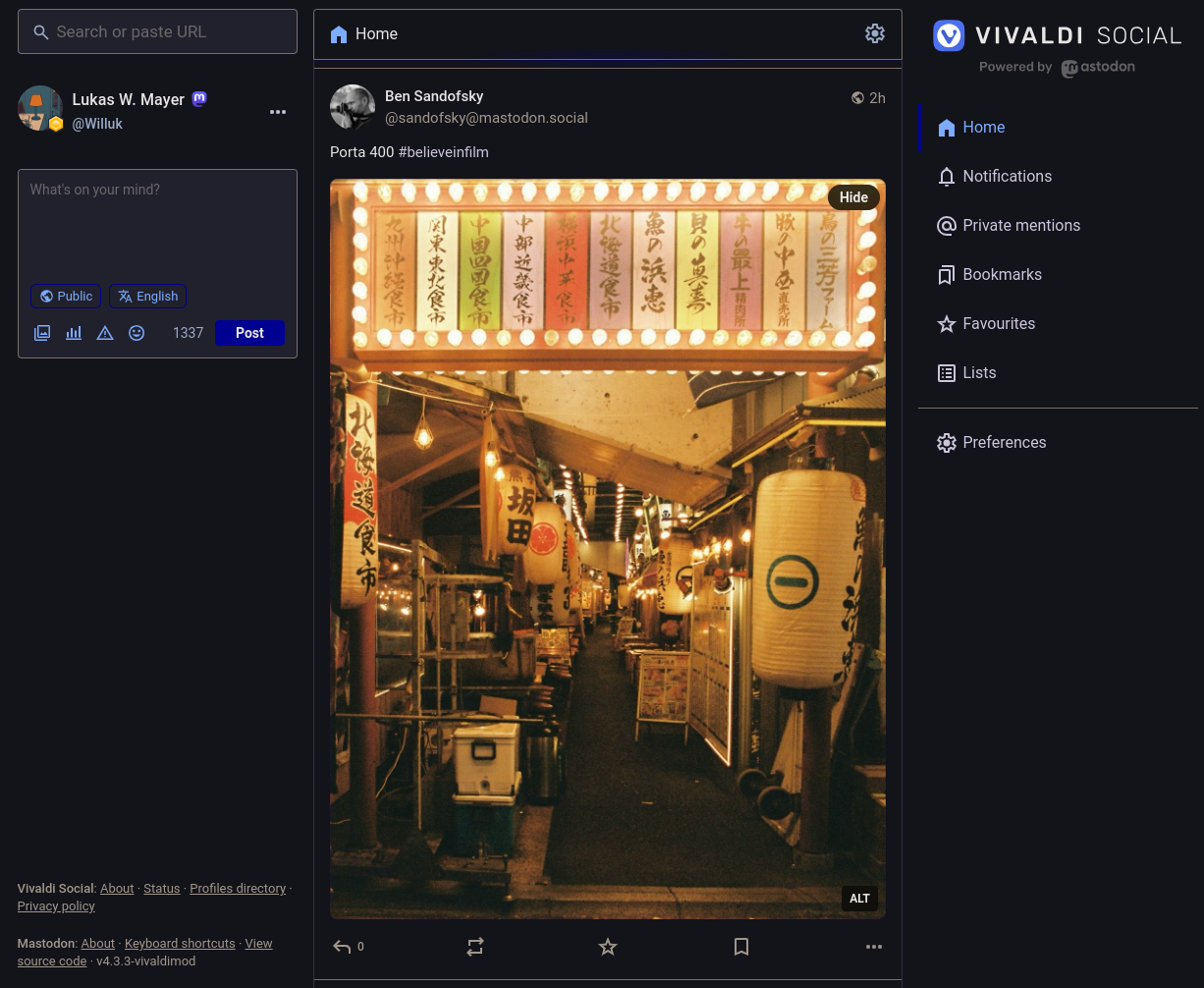A lot of the online platforms we have come accustomed to over the last decade or so are changing in ways we might not always appreciate. Some places have seen increasingly aggressive forms of advertising, others questionable changes in company policy, and yet others have either new or existing owners that increasingly show their true, not so nice, colors.
Does it really need to be like this?
The life cycle of many tech companies
There is a noticeable pattern that once-beloved, now-bemoaned services have in common. Namely, they all start with a huge pile of cash (“Venture Capital”) that they use to firmly establish themselves with. Sometimes it’s well-done marketing, other times it’s selling at a loss, or just straight up breaking laws that gets them ahead of competitors. Most often, it’s a mix of all three and more. Only once firmly established do these companies actually start monetizing with ads or price hikes in a way that can recoup their vast, initial costs. Typically, it’s hard for users to switch services, sometimes deliberately so. For example, social networks typically rely on you not being able to convince most of your friends to go somewhere else. Once this transition to profitability takes place, you often see outcries of users lamenting the changes that come with it.
The alternative path: the Fediverse
If you’re not loving the tech-company life cycle, I have good news for you.
In 2018 the people who decide the standards for the internet released ActivityPub, which is in essence a standardized format for social media platforms. Importantly, this means that any platforms that have the ActivityPub format in common can talk to each other.
Thanks to this development, users are able to freely move between platforms that use ActivityPub. Not only does this mean that you are not locked in to a single platform, but it also means that if you come up with a better platform, you can just start it and people can join without needing a new account. This network of interconnected platforms is called the Fediverse (Federated + Universe). What I’ve just described probably seems like a weird concept to anyone less-technologically inclined, but what’s important here is that this allows for a social network that is not controlled by any single entity. A common comparison people draw upon is e-mail, which has a similar structure of independently run services (mail providers) that interface with each other.
What’s Mastodon?
Mastodon is currently the most popular platform based on ActivityPub, with many different people hosting copies (“Instances”) of Mastodon. Think of each instance as a different community. All these instances can talk to each other, and you can follow people from other instances. As per the ActivityPub standard, you can also follow people from other platforms that use ActivityPub, like PeerTube (think: Youtube) or Pixelfed (think: Instagram). Mastodon looks similar to X/Twitter/Threads/Bluesky.
Why does this Fediverse stuff matter?
There are two big reasons.
1) If any Fediverse platform turns crappy, you are free to migrate your account somewhere else.
2) If you migrate your account somewhere else, you retain your follows and followers.
These two attributes directly protect you from the tech-company life cycle I described above.
My take is that this makes Fediverse platforms much more sustainable than the more traditional social media platforms. Creators especially should be paying attention to this, because it’s fairly hard (and risky) to convince your following to move from one traditional platform to another one. A creator’s career can take a serious hit if they are forced to switch platforms. That being said, the Fediverse is not big enough yet to be of serious interest for creators looking to make their living on social media.
Besides some of the very big servers, the Fediverse is more or less just people hosting these “instances” on their hardware because they want to1 . As such, there are no Ads, no AI-generated content, no algorithm shenanigans, no being subject to censorship you do not agree with. Platforms like Mastodon guarantee freedom in its truest form, far more than any corporate owned social media platform ever could. If you so wish you could create your own instance where no-one can censor you, and all your followers would still be able to see your postings, even if their accounts are registered somewhere else.
1 Mainstream platforms have a tough choice: either become more like the Fediverse, or risk inducing migration from their platform to the Fediverse. I think this explains why Threads and Tumblr are embracing ActivityPub; to not appear crappy enough that it would inspire their users to switch.
At the same time, you also do not need to subject yourself to spam, or content that you find deeply undesirable. Both of these things can be true at the same time for the simple reason that there is no algorithm in your main feed, just the people you follow.
Even though other platforms leveraging ActivityPub are much less popular than Mastodon, my sense is that they will inevitably grow. This is because every time a big-tech platform does something crappy, some people permanently join the extremely diversified Fediverse. Every time the Fediverse grows it becomes better (more users, more content), and more attractive for others. Eventually, it could hit critical mass where most people will agree that the switch is worth it. This is all to say that since the Fediverse is B.S. proof by design it benefits from the mistakes of others2.
2 Mainstream platforms have a tough choice: either become more like the Fediverse, or risk inducing migration from their platform to the Fediverse. I think this explains why Threads and Tumblr are embracing ActivityPub; to not appear crappy enough that it would inspire their users to switch.
Is Bluesky part of the Fediverse?
Sadly, not really.
While Bluesky is currently getting a lot of attention from X/Twitter refugees, it is also:
Funded by Venture Capital, a large part of which comes from Crypto Companies3.
Not currently federated, you can only join the server that Bluesky owns.
Using an in-house protocol4, not ActivityPub, meaning you cannot directly interface with the Fediverse5 .
Not controllable by the users because their protocol requires more centralization for moderation and content distribution. In essence, only companies and rich people can run a server6.
3 Do I even need to explain why this is a massive red flag?
4 Questionable at best given that ActivityPub is the officially recommended protocol.
5 While annoying, definitely solvable with some compatibility code.
6 This is a slight upgrade to being locked in to the platform of one billionaire I guess?
Personally, I strongly recognize parts of the tech-company playbook here that I described in the beginning. To me, it seems almost inevitable that Bluesky, once popular, will also make a turn for the worse. I am open to being proven wrong, but I am not holding my breath.
Mastodon may not have as good of a marketing team as Bluesky, and may also have some rough edges in the onboarding experience. However, it’s already heavily diversified, with individuals empowered to make meaningful contributions, and the development effort is moving to a non-profit model to ensure the project stays mission-driven. So yes, compared to Bluesky, I am pretty bullish on Mastodon not going rogue.
How to join Mastodon?
mastodon.social is the server that the developers of Mastodon own. Either join this one, or click on another server. Which specific one does not matter much, you can change it later, but you should pay attention to the rules of the server you are joining. Servers differ in what types of content is allowed.
Follow some people. For recommendations on how to curate your feed in the absence of algorithms, check out fedi.tips

